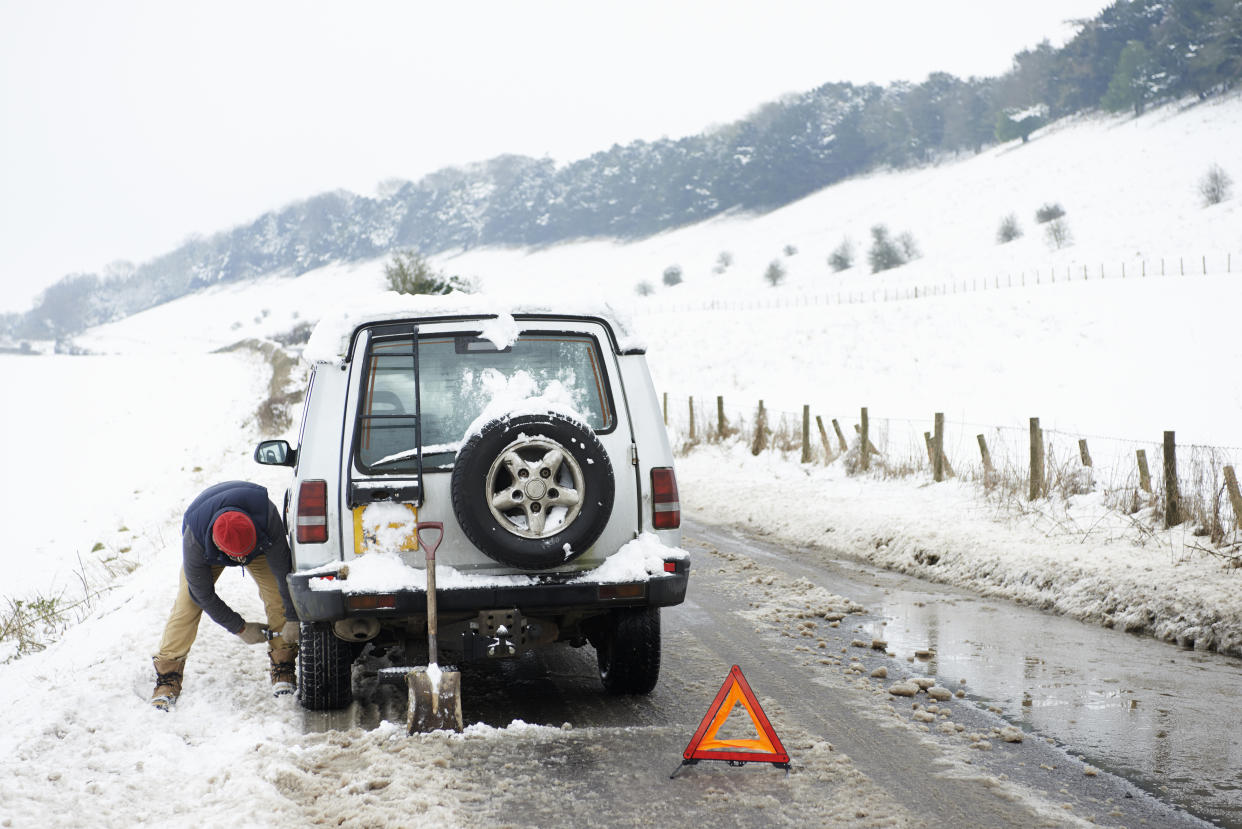Do you really need winter tires? It's absolutely 'crucial', expert says

Every year when temperature starts the drop and snow starts to fall, the winter tires debate springs up. From questions about when to put them on, to discussions about their cost versus road safety, consensus on the winter tire argument never seems to happen.
Each province has varying regulations and recommendation for winter tires. In Quebec, according to the provincial Highway Safety Code, all drivers must have winter tires on from December 15 to March 15 inclusively. Failure to do so can result in fines of up to $300.
In Ontario, for example, there isn’t specific legislation around winter tires but you can save on your insurance premium if you use them. According to the Ontario Ministry of Finance, winter tires that are in good condition can shorten braking distances by as much as 25 per cent.
Although regulations differ across the country, insurance companies and driving experts alike agree that putting winter tires on your car, no matter where you live Canada or the vehicle you drive, is imperative for winter road safety.
“Many people think winter tires are only important when driving in snowy or icy conditions but they also help with handling, maneuverability and braking in cold weather,” Kaitlynn Furse, public relations manager, CAA South Central Ontario (CAA SCO) said in a statement.
According to Andrew Comrie-Picard, a BFGoodrich ambassador, professional racer driver and stunt driver for film and television shows such as Top Gear USA and NCIS New Orleans, it’s “crucial” that every driver uses winter tires in below freezing temperatures, even if you have an all-wheel drive of four-wheel drive vehicle.
“Any tire is developed and optimized for a certain type of service use, and the conditions that we see in Canada are some of the most extreme winter conditions in the whole world,” Comrie-Picard said. “In the winter, all an all-wheel drive car will do is get you to the accident faster because while four driving wheels help you accelerate forward, they don’t help you stop any faster.”
Despite expert, insurance and government commentary on the importance of winter tires, drivers still have doubts and criticism about these seasonal products.
I have 4×4 I don’t need wimpy winter tires!
— Dylan Murphy (@Dylan_YYC) November 11, 2017
WINTER TIRES ARE A SCAM
— 〰 kg (@keonnaguidolin) November 11, 2017
Why you need them
The importance of winter tires comes down the tires’ ability to grip onto the road and perform at lower temperature, so you can brake and steer effectively in the winter season. Contrary to popular belief, the necessity of winter tires is related to temperature more so than precipitation.
“Winter tires…are optimized to stay flexible, and to maintain the chemical and mechanical grip on the road at lower temperatures,” Comrie-Picard said. “[Winter tires] maintain their grip for breaking, for steering and also for accelerating in those low temperatures.”
How they’re different
Winter tires contain a special rubber compound that keeps tires soft. Due to their flexibility, winter tires are specifically manufactured to ensure that tread blocks retain their structure with the softer compound.
Winter tires also have small edges or cuts that act as pressurizers on the surface. They pick up a little bit of snow, which grips onto more snow that is on the road.
The mechanics of a winter tire might make sense, but the most popular complaint that drivers have is the cost of these specialty tires.
Canadian Tire just quoted me 1450$ for winter tires.
I won't be driving into a ditch this winter, unless the exhaustion from not being able to afford food hits.
— A. Doré (@sassypants81) November 20, 2017
Who decided that a set of winter tires should cost $1200? I am not made of money thank you very much.
— BlackAndBuckskin (@Black_Buckskin) October 30, 2017
I'm still pondering on the $1000 plus dollars it's going to cost me to purchase Winter tires #canadalife
— Uzo (@uzzymama) November 9, 2017
Why the alternatives wont’ work
Since the cost of winter tires is so high, some drivers opt for used tires as a way to save a few dollars, but professionals like Comrie-Picard are strongly against it.
“A used tire, by definition, is going to have less than brand new tread depth, you’re already compromising some traction and some safety,” Comrie-Picard said.
Another common solution for saving money on winter tires is to only replace the tires on the drive axle of the car, which Comrie-Picard also advises against.
“It creates an uneven traction balance on your vehicle, especially if you put them on the front of the car…you’ll have much more of a tendency to spin out,” the professional driver said. “Even though you’ll have that great traction to accelerate … it doesn’t help you when you’re steering, when all wheels need to be getting great traction, and it also compromises you on your breaking.”
Comrie-Picard identifies that overall, you need to focus on getting the best grip possible for the winter. Drivers in Canada should look for the three-peak mountain snowflake symbol on the wide wall of the tire they are thinking of purchasing, indicates that the tire has fulfilled its winter traction requirement, according to the Tire and Rubber Association of Canada.
Whether you have winter tires already or you’re still holding out for that stormy weather, it looks like the best way to drive safely in cold conditions is to bite the bullet and put on these seasonal tires.
In parts of the country without specific regulations, Comrie-Pircard stresses that winter tires are definitely necessary when temperatures approach 0 C, while CAA SCO says that you should put your winter tires on once temperatures drop below 7 C.
“Preparing now means fewer surprises during the winter months,” Furse said.


